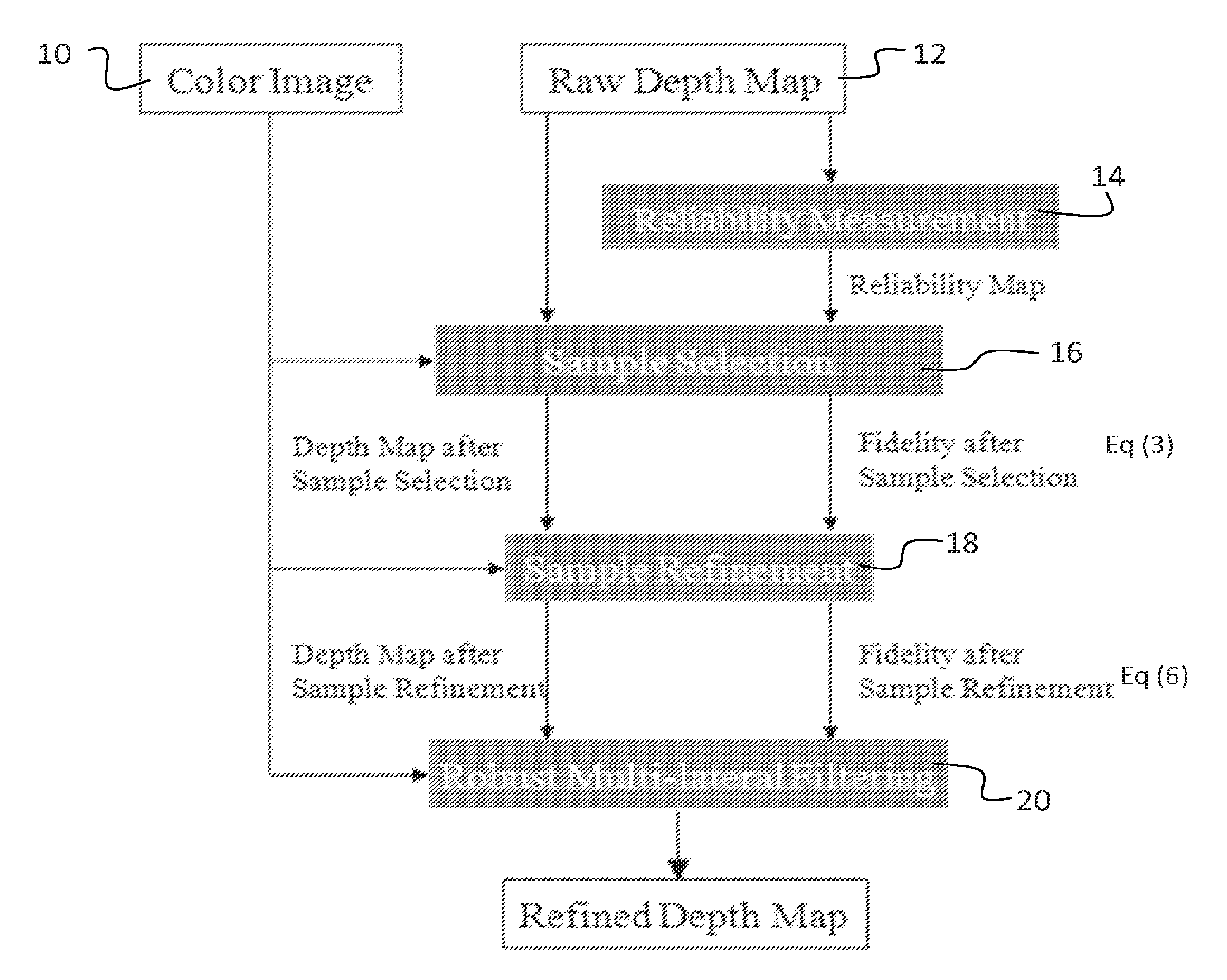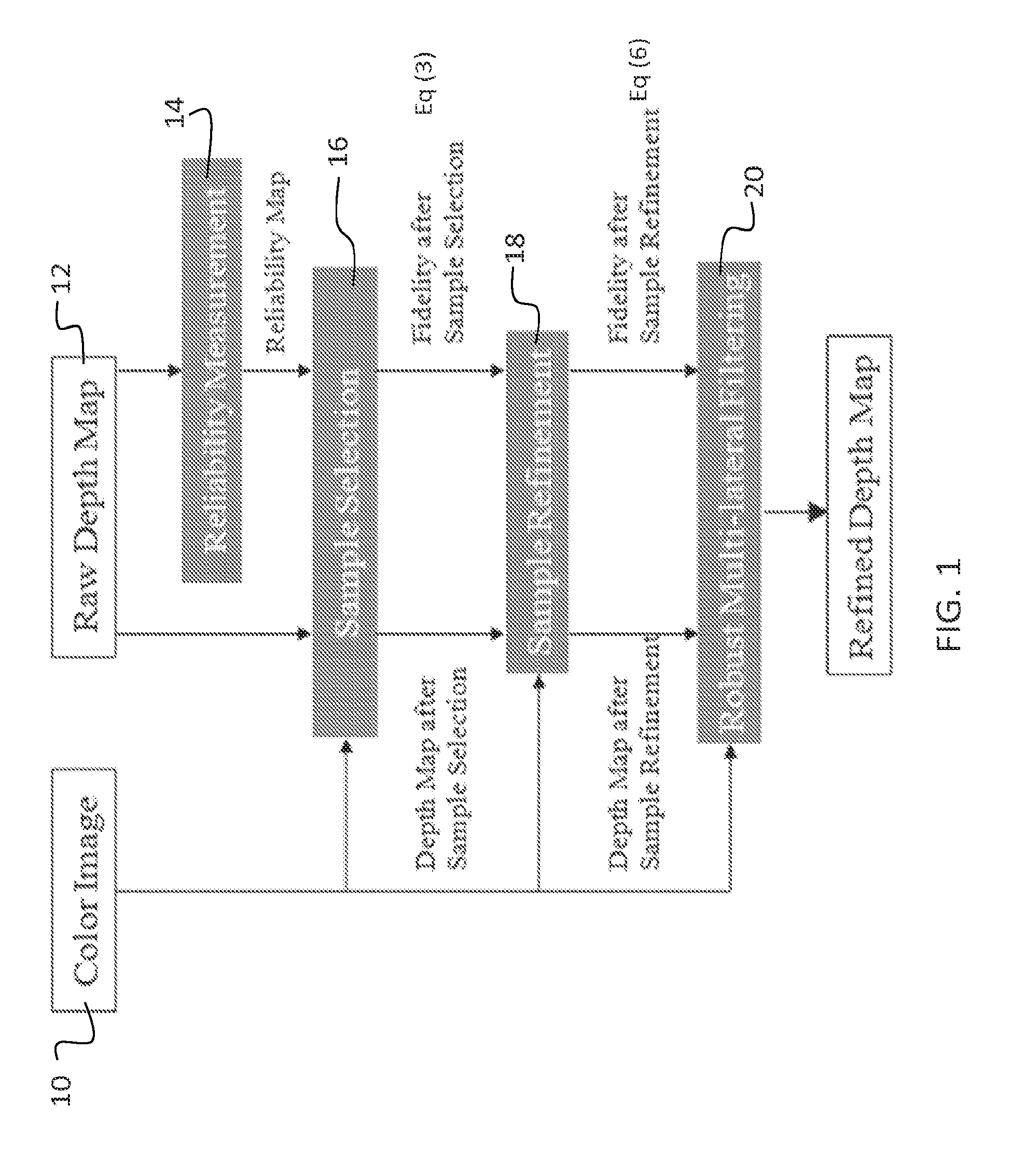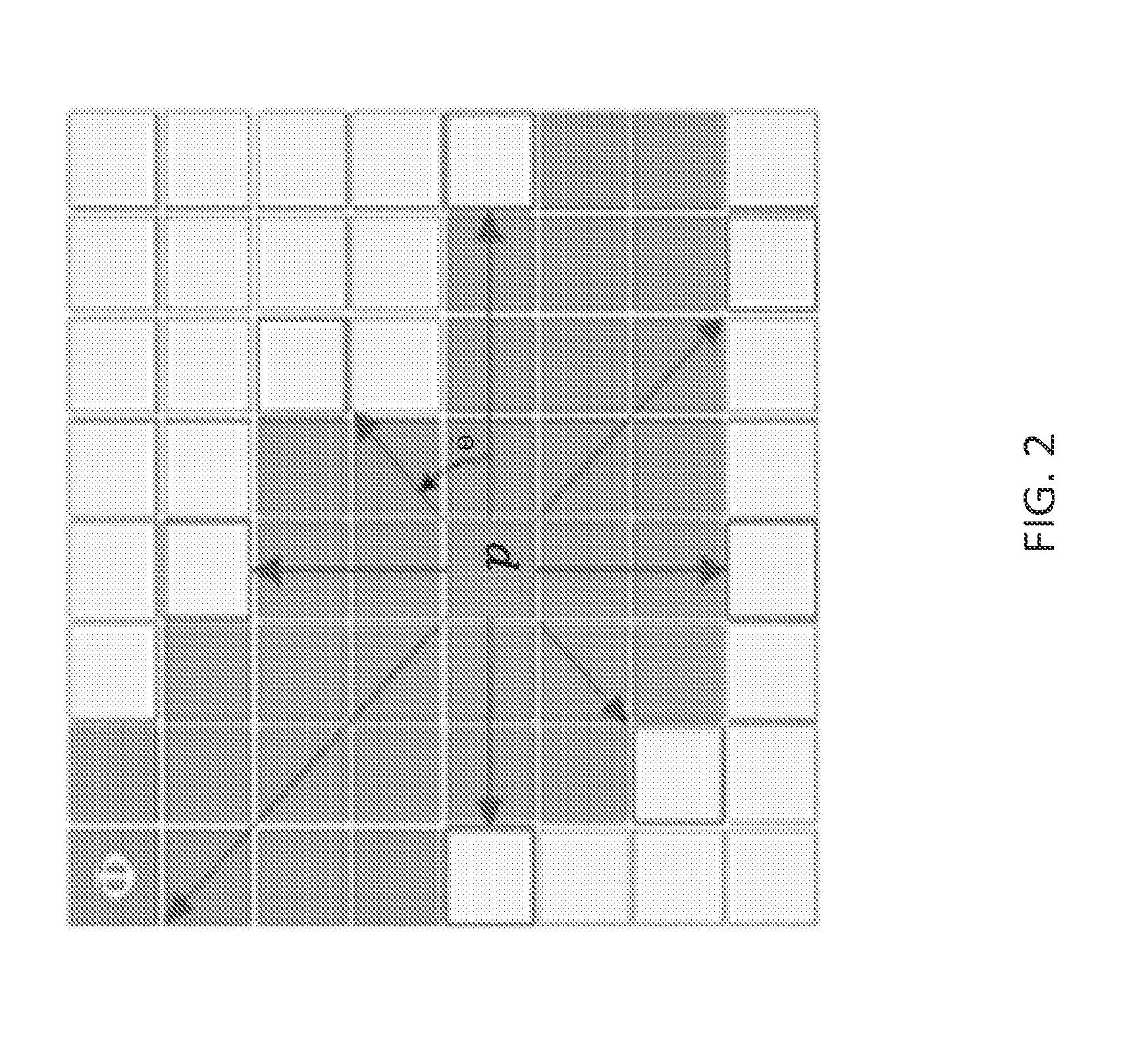Sampling-based multi-lateral filter method for depth map enhancement and codec
a multi-lateral filter and depth map technology, applied in image enhancement, image analysis, instruments, etc., can solve the problems of less depth information, less depth information, and most previous techniques suffer from artifacts, and achieve the effect of improving the depth map
- Summary
- Abstract
- Description
- Claims
- Application Information
AI Technical Summary
Benefits of technology
Problems solved by technology
Method used
Image
Examples
Embodiment Construction
[0012]An embodiment of the invention is a method that enhances noisy or low-resolution depth maps using information from corresponding high-resolution color images. The method utilizes sample selection, preferably including sample refinement, in conjunction with multi-lateral filtering, derived from joint bilateral filtering using a new weighting metric. Experimental results verify that the method performs very well in comparison to existing methods known to the inventors.
[0013]A preferred embodiment depth map enhancement method is based on sample selection, subsequent selection refinement, and robust multi-lateral filtering. Depth samples are collected from a nearby reliable region. Each pixel shoots several rays toward reliable region and collects the closest samples. Then the samples are refined by comparing their own choice of best depth sample with the choices of their neighborhood. These are sampling-based approaches to improve depth map and do not contain the filtering method...
PUM
 Login to View More
Login to View More Abstract
Description
Claims
Application Information
 Login to View More
Login to View More - R&D
- Intellectual Property
- Life Sciences
- Materials
- Tech Scout
- Unparalleled Data Quality
- Higher Quality Content
- 60% Fewer Hallucinations
Browse by: Latest US Patents, China's latest patents, Technical Efficacy Thesaurus, Application Domain, Technology Topic, Popular Technical Reports.
© 2025 PatSnap. All rights reserved.Legal|Privacy policy|Modern Slavery Act Transparency Statement|Sitemap|About US| Contact US: help@patsnap.com



